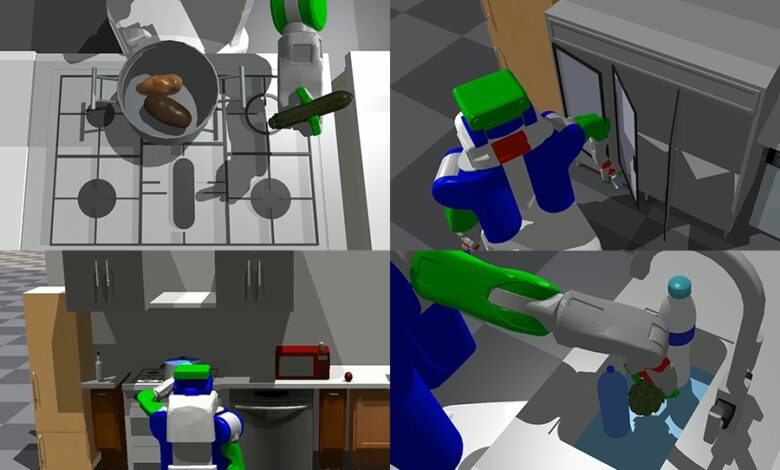MIT develops a movement and job planning system for dwelling robots

[ad_1]
Why aren’t there extra robots in properties? This a shocking advanced query — and our properties are surprisingly advanced locations. An enormous a part of the explanation autonomous techniques are thriving on warehouse and manufacturing unit flooring first is the relative ease of navigating a structured setting. Positive, most techniques nonetheless require an area be mapped previous to attending to work, however as soon as that’s in place there tends to be little in the way in which of variation.
Houses, then again, are sort of a nightmare. Not solely do they fluctuate dramatically from unit to unit, they’re stuffed with unfriendly obstacles and are typically pretty dynamic, as furnishings is moved round or issues are left on the ground. Vacuums are probably the most prevalent robots within the dwelling, they usually’re nonetheless being refined after a long time in the marketplace.
This week, researchers at MIT CSAIL are showcasing PIGINet (Plans, Photographs, Aim, and Preliminary information), which is designed to convey job and movement planning to dwelling robotic techniques. The neural community is designed to assist streamline their skill to create plans of motion in numerous environments.
MIT explains PIGINet thusly:
[I]t employs a transformer encoder, a flexible and state-of-the-art mannequin designed to function on knowledge sequences. The enter sequence, on this case, is details about which job plan it’s contemplating, photos of the setting, and symbolic encodings of the preliminary state and the specified purpose. The encoder combines the duty plans, picture, and textual content to generate a prediction relating to the feasibility of the chosen job plan.
The system is basically targeted on kitchen-based actions at current. It attracts on simulated dwelling environments to construct plans that require interactions with numerous completely different components of the setting, like counters, cupboards, the fridge, sinks, and so on. The researchers say that in easier eventualities, PIGINet was capable of scale back planning time by 80%. For extra advanced conditions, that quantity was typically round 20-50%.
The staff means that homes are simply the beginning.
“The sensible purposes of PIGINet should not confined to households,” says PhD scholar, Zhutian Yang. “Our future purpose is to additional refine PIGINet to recommend alternate job plans after figuring out infeasible actions, which can additional pace up the era of possible job plans with out the necessity of huge datasets for coaching a general-purpose planner from scratch. We imagine that this might revolutionize the way in which robots are skilled throughout growth after which utilized to everybody’s properties.”
[ad_2]
Source link




